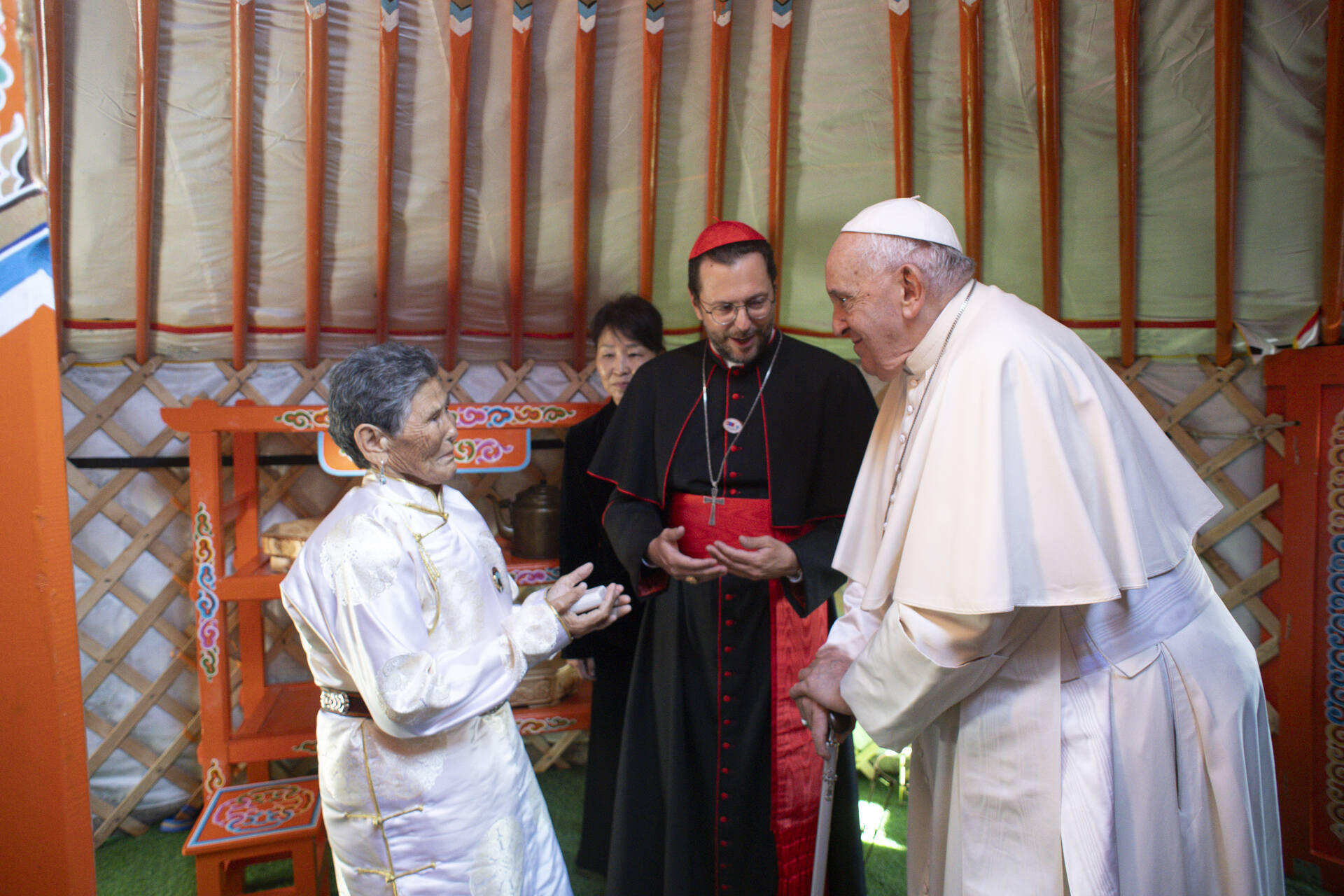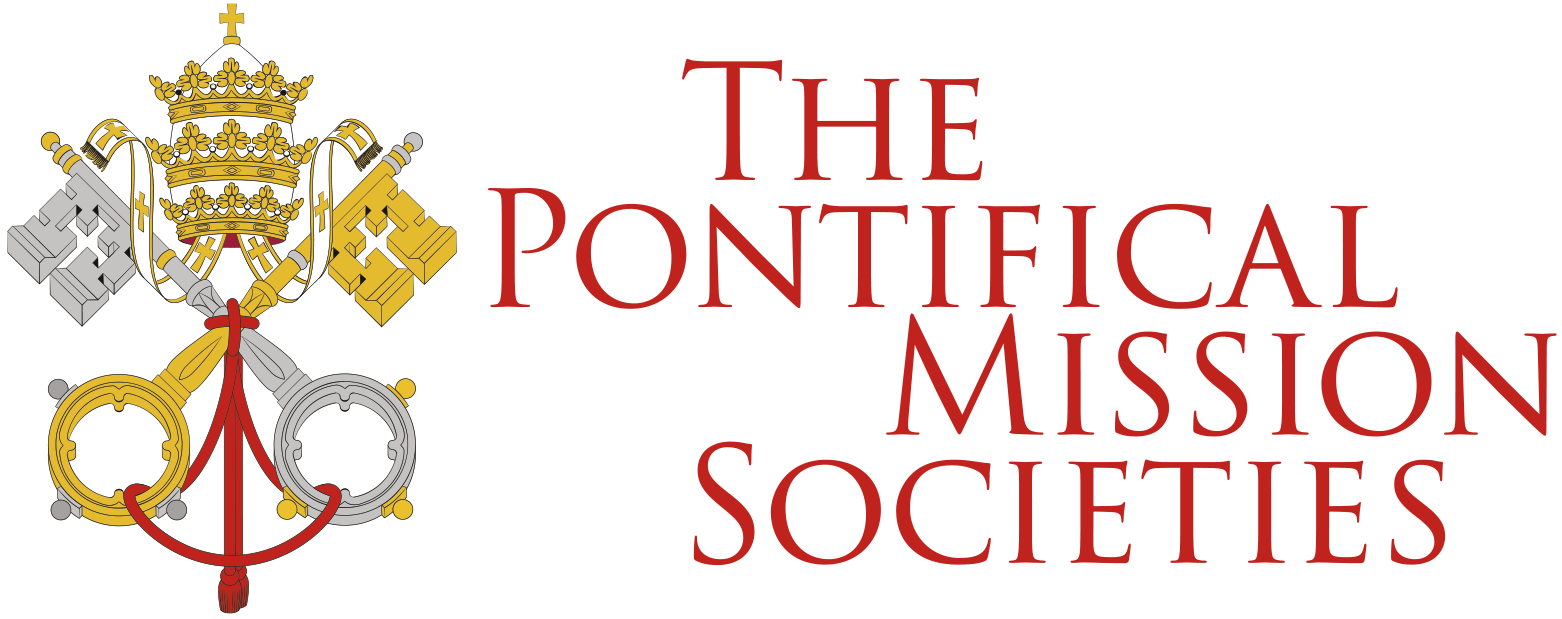
In the heart of Asia, where the vast steppes meet the sky, the Catholic Church has found a humble abode in Mongolia, a land known for its rich history and nomadic culture. The young Cardinal Giorgio Marengo, the Apostolic Prefect of Ulaanbaatar, has been nurturing the seeds of faith in this distant land, becoming a bridge between the Vatican and Asia. He was tasked with welcoming Pope Francis last year.
In a candid conversation, Cardinal Giorgio shares his journey of faith and the burgeoning Catholic community in Mongolia. Upon inquiring about his choice of missionary priesthood over diocesan, Cardinal Giorgio reflected, “During the discernment of my vocation, the consecration of religious life played a particular role. From the moment I felt the Lord called me to work for Him, I felt a call to religious vocation, which led me to the Institute of the Consolata Missionaries.”
When asked if a particular country was on his mind, the cardinal reminisced, “Initially, no, just a desire to answer this call of giving my life to the Lord. Gradually, my heart was calling me toward Asia. However, having a vow of obedience, it wasn’t up to me. But my ordination almost paralleled our institute’s decision to go to Mongolia for the first time. We were two priests and three religious sisters.”
Language, an essential tool for evangelization, posed a challenge in Mongolia. “Yes, even for us Latinos it requires a lot of effort, it’s a challenge to learn Mongolian, which has roots or similarities with Korean, Japanese, Turkish, Hungarian,” Cardinal Giorgio noted. On evangelizing without mastering the language initially, he said, “One learns firsthand that the mission, more than doing, is being there, in a certain place at a certain time, and the Lord utilizes this.”
Cardinal Giorgio’s admiration for Mongolia is palpable. “Mongolia itself! It’s a country with a rich history, which three or four centuries ago closed in on itself. It’s a nation that expanded immensely, creating the largest continuous territorial empire in history. They conquered many without ever being conquered, instilling enormous national pride. They have maintained their identity despite being sandwiched between two great civilizations, the Russo- European and Chinese. This makes them unique, with a marked cultural and religious tradition rooted in Shamanism and Tibetan Buddhism. The nomadic way of life is also clearly visible as a deeply ingrained cultural category.”
Following the fall of the Soviet Union, Mongolia transitioned away from its Soviet-allied communist government and religious freedom was enshrined in its constitution. This transition allowed the Catholic Church to establish a sanctioned presence in Mongolia starting in 1992. The early 1990s marked the arrival of the first Catholic missionaries in the country, setting the foundation for what would become one of the world’s smallest Catholic communities. As of now, there are around 1,300 to 1,500 Catholics in Mongolia, a testament to the enduring efforts of those early missionaries and the continuing work of individuals like Cardinal Giorgio.
In addition to the religious mission, the diplomatic relationship between the Holy See and Mongolia has been growing. The visit of Pope Francis to Mongolia is indicative of the Vatican’s interest in fostering not only religious but also diplomatic relations in the region, especially given Mongolia’s strategic location between Russia and China, with whom the Holy See has had historically complex relationships. This diplomatic endeavor is part of a broader effort to enhance the Vatican’s engagement in the geopolitical landscape of East Asia, amidst the challenges and opportunities presented by the region’s diverse religious and political contexts.
The Catholic Church in Mongolia, though small, is blooming under the nurturing care of the Apostolic Prefecture. “It’s a very small church, needing to root well, aiming to form individuals who make this choice of faith, and prepare them to live the reality as Christians. Our communities greatly value the Neocatechumenal Way, but also the introduction to Christian life,” shared Cardinal Giorgio.
The growing Catholic community in Mongolia is distributed across eight parishes and a chapel, representing about 0.04% of the country’s population. This growth from no registered Catholics in 1992, showcases the Church’s burgeoning presence in Mongolia over 30 years. The ecclesiastical structure includes one bishop, 25 priests, and 35 catechists, dedicated to nurturing the faith among the Mongolian Catholics.
Cardinal Giorgio believes the historic visit of Pope Francis to Mongolia was a cornerstone in affirming the Catholic presence: “It was fundamental. If I put myself in the place of a Mongol who has converted to Christianity, knowing I am an absolute minority, knowing that our religious leader came to visit us, spoke with our political leaders, and appreciated our cultural and historical roots, it helps immensely for the Catholic Church to be seen as a beautiful, noble, and worthy reality. For our local Catholics, it’s an enormous boost. The fact that he entered a ger (traditional Mongolian tent) is highly significant. We can always talk about this, reminding them that the Pope knows we exist. It also reinforced diplomatic relations between the Holy See and Mongolia that have existed for 30 years but still need to find concrete situations of collaboration.”
As for those considering the missionary path, Cardinal Giorgio’s advice was heartfelt: “Firstly, witnessing faith joyfully where we live is very important, a great contribution to the mission of the church. And we are always happy to welcome whoever wants to come with their own gifts, sacrifices, and active participation!”
Cardinal Giorgio’s journey, along with the small but vibrant Catholic community in Mongolia, exemplifies a living testament to the Gospel’s far- reaching embrace, even in the far-flung steppes of Mongolia, under the watchful eyes of the youngest member of the College of Cardinals.
Read more stories in MISSION Magazine



